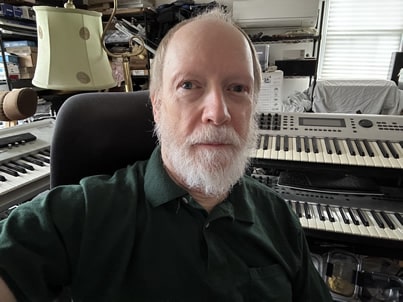
David English has written more than a thousand articles for a variety of publications, including Attaché, boot, Business 2.0, CEO Magazine, CNET, COMDEX Daily, Compute Magazine, Computer Shopper, DigitalCameraReview, Digital Cinema Report, Film & Video, Fortune, Hemispheres, Inc. Magazine, Maximum PC, Mobile PC, NotebookReview, Omni, PC Magazine, PC World, Sky, TakeOff, Thrive, TWICE, US Airways Magazine, Yahoo! Internet Life, and ZDNet.
He has covered data mining for Teradata Magazine, the Bluetooth specifications for SIGnature magazine, boardroom technology for Architectural Record, computer workstations and monitors for StudioDaily, printers and scanners for PCMag, and cameras, lenses, and photographic technique for The Leica Camera Blog.
David has worked as the editor of Computer Entertainment News, editor of Smart, and managing editor of Compute Magazine. During his time with those publications, he edited approximately 1,200 articles. He has contributed to four computer-related books and one business-management textbook.
In 1998, he received a national Editorial Excellence Award from the American Society of Business Publication Editors (ASBPE). The PC World article, “AGP Graphics: A Bumpy Ride,” which he co-authored with Michael Desmond, won the first-place award for “Best Technical Article: Over 80,000 Circulation.” The same article won a first-place award at the ASBPE West Coast Awards Competition. In 1996, he received a Cahners Editorial Merit Award for “Best Subject-Related Series of Articles.” Published in Smart, the articles analyzed Microsoft’s retail launch of Windows 95.
He served on the CES (Consumer Electronics Show) Conference Advisory Board for four years (1995-1998) and has appeared on industry-related panels, television broadcasts, and radio programs. He has been a judge for many industry awards, including the CorelDRAW World Design Contest (1992-1996), Software Publishers Association’s Excellence in Software Awards (1995-1999), Computer Press Association’s Computer Press Awards (1996-2000), Bluetooth SIG Developers’ Contest (2003), Software & Information Industry Association’s Codie Awards (2000-2006), DIMA Innovative Digital Products Awards (2007-2010), CTIA Hot for the Holidays Awards (2014-2015), CTIA E-Tech Awards (2011-2016), and StudioDaily Prime Awards (2012-2018).
David was appointed the head of the 1996 Press Caravan at Brazil’s Fenasoft tradeshow, where he delivered the presentation speech at the Max award ceremony. He was also a speaker on a Fenasoft conference panel that discussed technology in education, where simultaneous translation was provided in English, German, Japanese, Portuguese, and Spanish.
From 2009 through 2018, he took time off during his visits to technology tradeshows to pursue his interest in black-and-white photography. During that period, he shot photos in New York, Las Vegas, Tokyo, New Orleans, and Cologne. Ten of those photos were featured in a solo exhibition at the Leica Store at Caesars Palace in Las Vegas. Titled “Monochrome Vegas,” the large photo prints were displayed there from August 2017 through August 2018.
He also created what may have been the first completely computer-generated television commercial. It was broadcast in 1982 over WTXX (channel 20 in Waterbury, Connecticut). For the animation, he used The Graphics Magician (from Penguin Software) running on an Apple IIe. And for the music and sound effects, he used an alphaSyntauri synthesizer connected to an Apple II+. The two computers were synced together at the television station, where the “Mr. Video” commercial was transferred to videotape for broadcast.
Academically, David has a B.A. and M.A. in English Literature from Wake Forest University and an M.A. in Cinema Studies from New York University. He has also completed most of the requirements for a Ph.D. in Cinema Studies from New York University. For his doctoral work, his principal areas of study were narrative structure, German and Soviet films of the 1920s, and American avant-garde films.